featured insight
featured insight
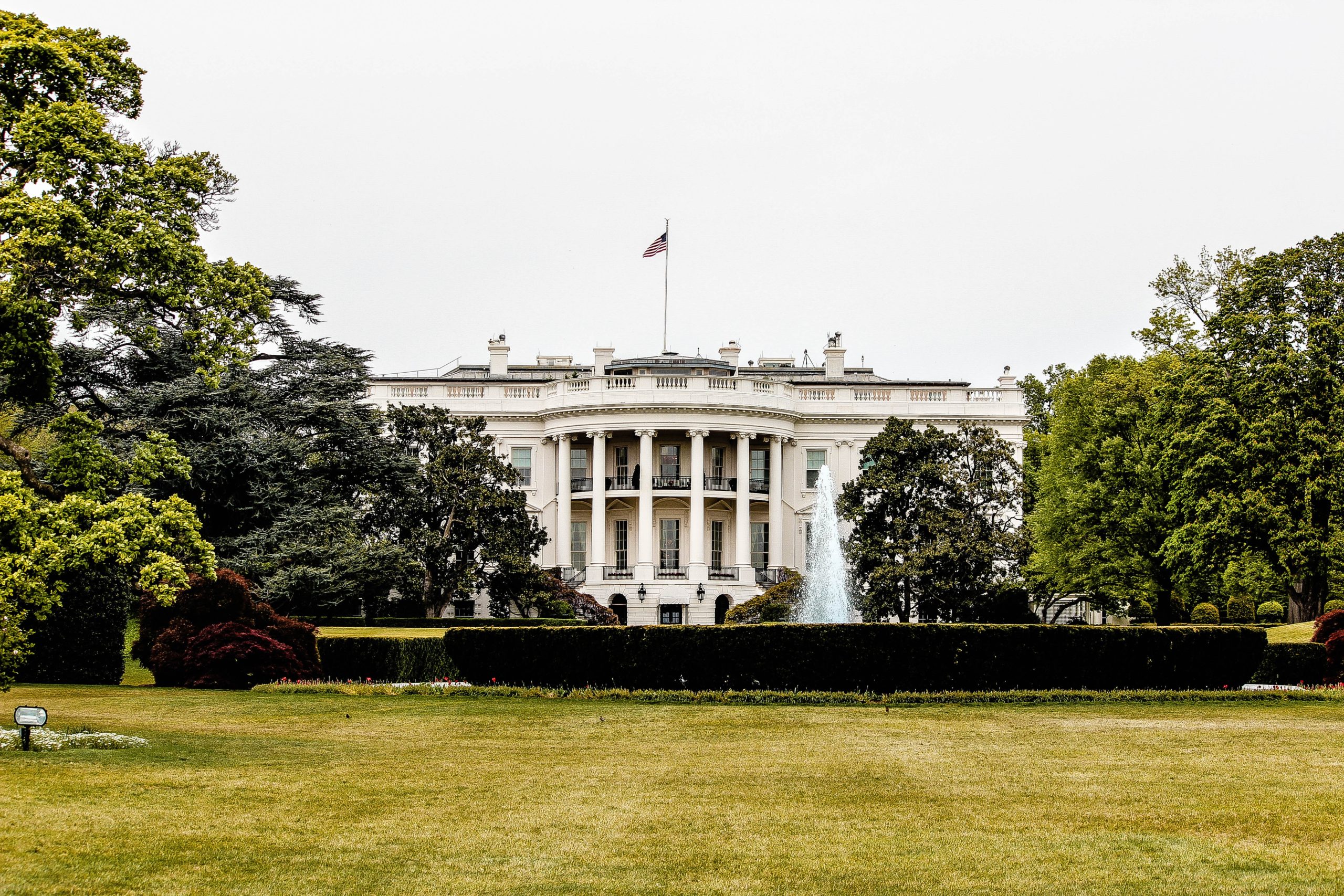
2020 Presidential Election Retrospective: The Lead-Up
Meeting Street Insights combines behavioral data points with polling data to get a clearer picture of the 2020 Presidential election.
Now that some of the dust has settled on the 2020 election, the Meeting Street Insights team is analyzing the larger body of voter data, looking for insights that can help all of us understand the nuances of the election. In this post, we highlight key indicators and behaviors that gave us clues to voter behavior on Election Day, including priorities, election interest, and behavioral data on campaign contributions and television viewership. In Part II of our retrospective, we’ll look at Election Day data and what that can tell us about voters.
Voter Turnout in the 2018 Midterms was Historic
The high turnout levels we saw in 2020 had been building for a while, and the 2018 midterms set the stage for a record turnout. The percentage of eligible Americans who voted that year reached 50% for the first time since 1914, driven by increased election interest and the increased sense of the Presidential election’s importance.

Despite a record-setting turnout in 2018 that resulted in Democrats picking up 41 seats in the House and strong polling for Biden, Democrats were nervous. On October 22, the New York Times published a story called “How Democrats are Celebrating Biden’s Lead: With Abject Dread” which detailed Democratic unease with the election, despite positive polling numbers for Biden.
The Beginning of 2020 Showed Trump in a Strong Position
Based on historical indicators, Democrats did have reason to worry. President Trump had several major factors in his favor coming into 2020. Impeachment proceedings during the end of 2019 and early 2020 hadn’t decreased Trump’s job approval rating. In fact, in February 2020, Trump’s job approval was 49%, the highest it reached during the course of his presidency. President Trump had three other major factors in his favor in February of 2020:
- The economy had experienced 128 months of growth, the longest economic expansion in American history.
- Unemployment was at 3.5%, tied for the lowest rate in over 20 years.
- Gallup released a poll that indicated 45% of Americans were satisfied with the nation’s direction, the highest percentage since 2005.
But Then COVID-19 Came Along
In March and April, the scope and impacts of the COVID-19 pandemic started to reverberate around the world. On March 12, 2020, the stock market crashed, experiencing the single greatest percentage decrease in stock value fall since 1987. The next day, President Trump declared a national emergency.
The pandemic quickly became the most important issue for voters. In late September, 60% of voters stated that the Coronavirus outbreak was “extremely important” to their Presidential vote, more than any other issue.
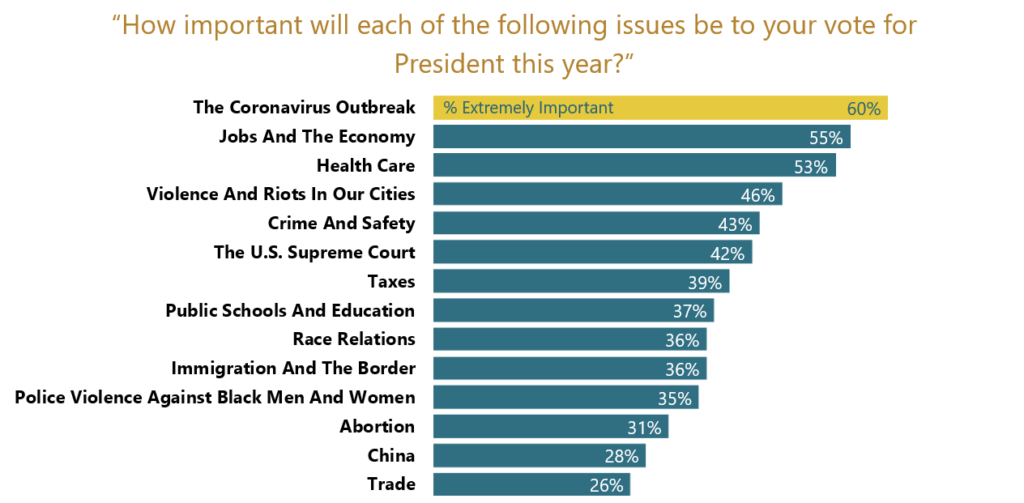
In 2020, More Americans Believed it Really Mattered Who Won This Election
The urgency of the COVID-19 crisis is reflected in polling on the importance of who would win the presidential election. In 2000, 50% of Americans believed that who won the Presidential election really mattered as far as making progress on the important issues facing the country, while 44% said things would be pretty much the same no matter who won. But Americans’ perception of the importance of who wins has increased dramatically since then. In August 2020, 83% of Americans believed that the who would win really mattered when it came to resolving the issues facing the country, while only 16% thought it would be about the same no matter who won.
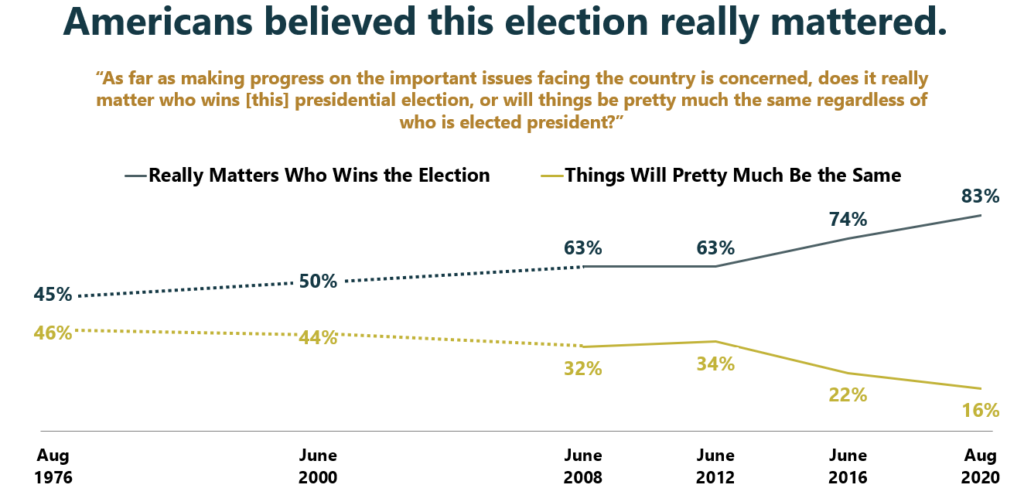
Interest in the Election was Extremely High
In the midst of a global pandemic and a busy news environment, election interest was extremely high. Interest was 12 percentage points higher in 2020 than it was in 2016. Interest was equally high among Republicans and Democrats.
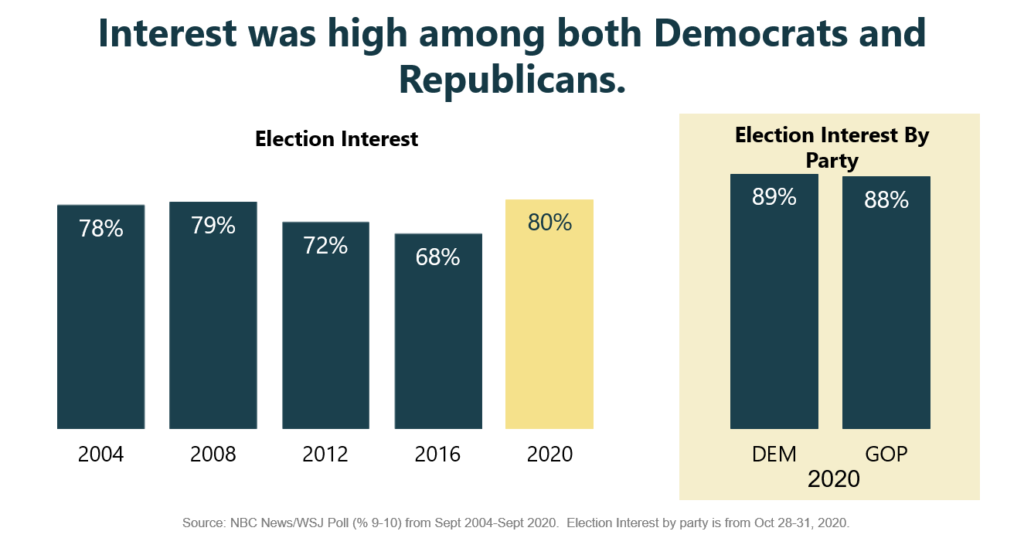
Factors Outside of Polling Also Pointed to Increased Engagement
This increased interest was reflected in voter behaviors such as campaign contributions. Spending in 2020 on political advertising was twice that of 2016. As Americans were telling pollsters they were more interested than ever in the election, they were also putting their money where their mouths were. As of mid-October, donations to the two candidates and parties totaled nearly $2.5 billion.
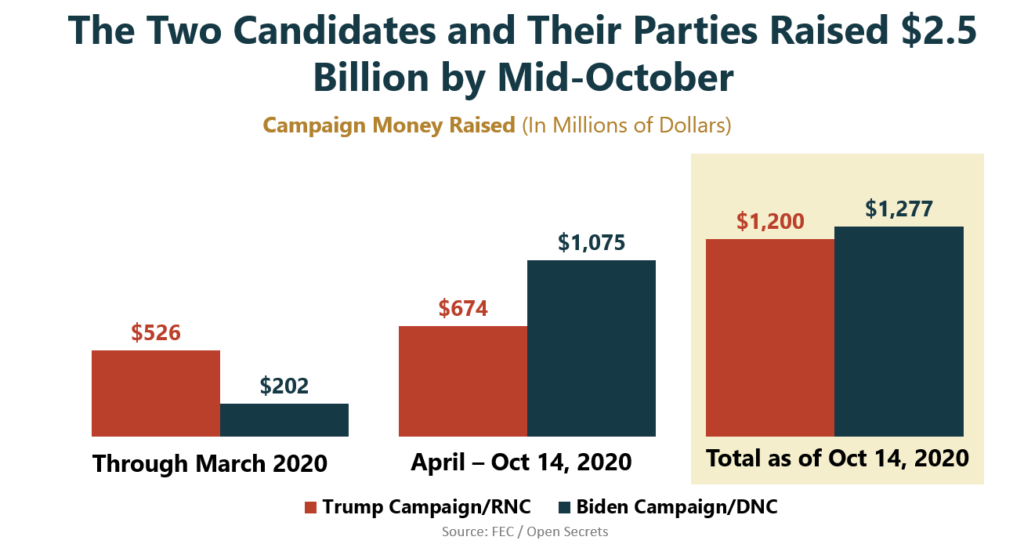
Americans were also tuned into the debates. The first debate was watched by over 73 million people, higher than almost every other televised debate. The Vice Presidential debate followed a similar pattern, bringing in more viewers than any other Vice Presidential debate other than 2008.
COVID-19 Dominated Perceptions of President Trump’s Campaign
In the battle over voter attention, Trump became associated with the Coronavirus pandemic. In the last week of the campaign, a survey asked respondents to share what they had read or heard about Trump and Biden. “Coronavirus” appeared more in the responses about Trump, who—along with many family members and staffers—had contracted and recovered from COVID earlier in the month, while Americans heard more about “campaign” and “plan” in association with Biden.
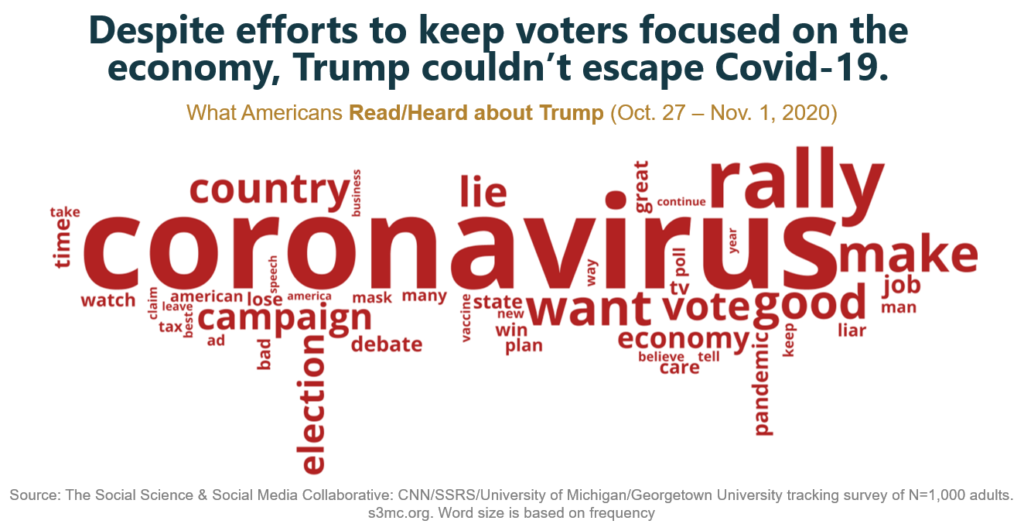
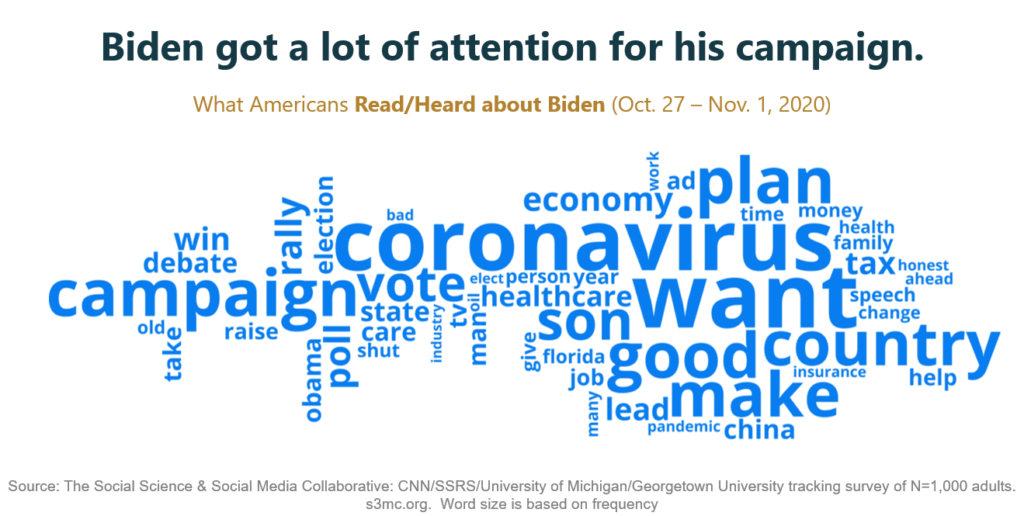
Partisan Perceptions of the Two Candidates Were Strongly Locked In
Democrats and Republicans believe in their respective candidates, and there is little faith in the opposition. When asked which candidate is better described by the phrase “cares about people like you,” 92% of Republicans said Trump while 95% of Democrats said Biden. Only 6% of Democrats agreed that Trump cares more about people like them, and only 4% of Republicans agreed that Biden did. This pattern holds across a wide variety of questions, including which candidate “will keep Americans safe” and which candidate “has a clear plan for solving problems.”
However, when asked which candidate “will unite the country and not divide it,” 11% of Republicans said Biden. This was still significantly lower than those who said Trump (84%), but the percentage of Republicans who said Biden was higher on this question than any other question asked.
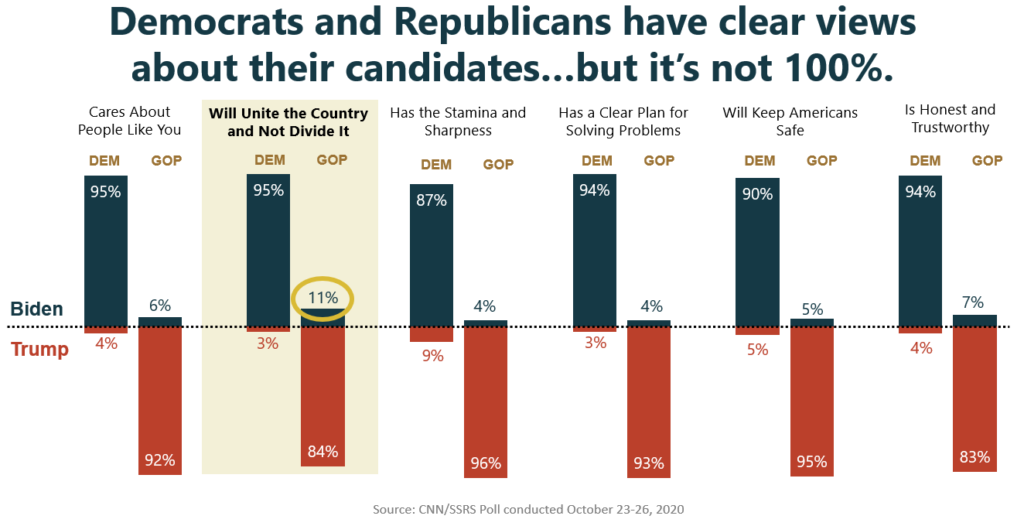
Voter focus on the COVID-19 pandemic, increased interest in the election, increased perception of the importance of which candidate won the election, record campaign contributions, and high viewership levels all set the stage for a high-turnout election.
In part two, we’ll look at the data from early voting and election day, including voter turnout, to continue to build a clearer picture of the 2020 Presidential election.
What do you need to know? We can help. Get in touch or subscribe to our newsletter.

